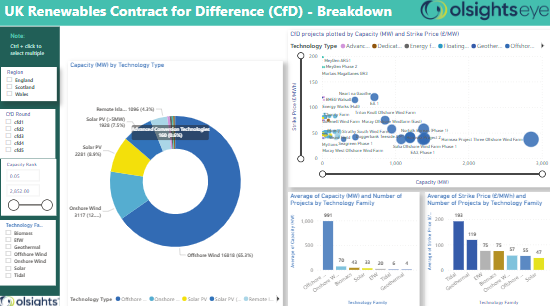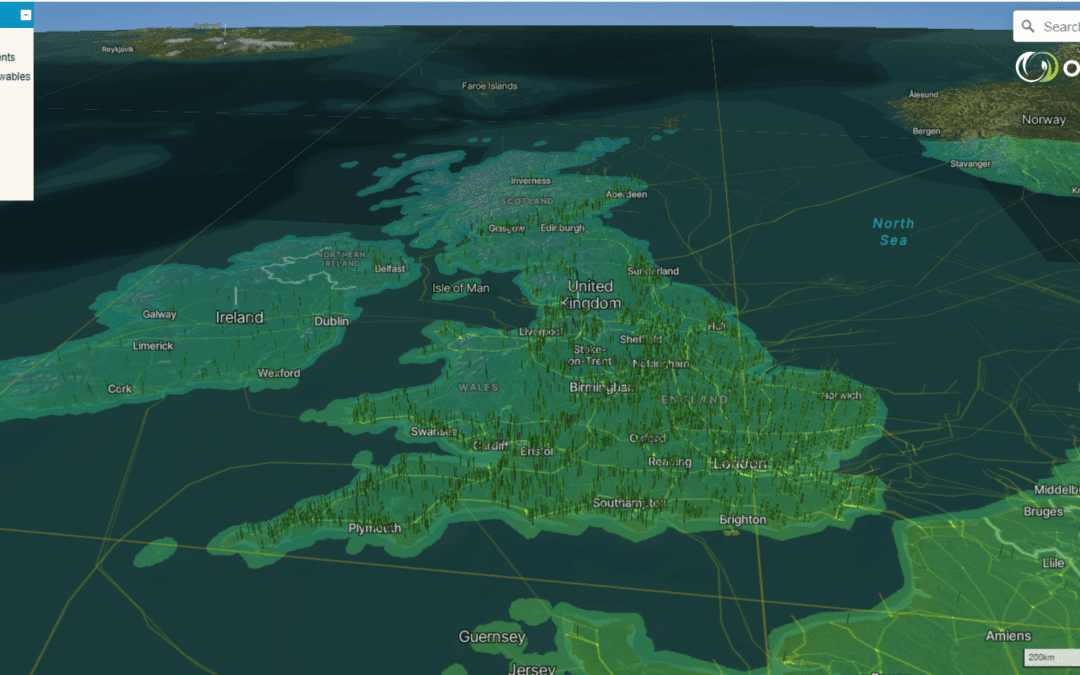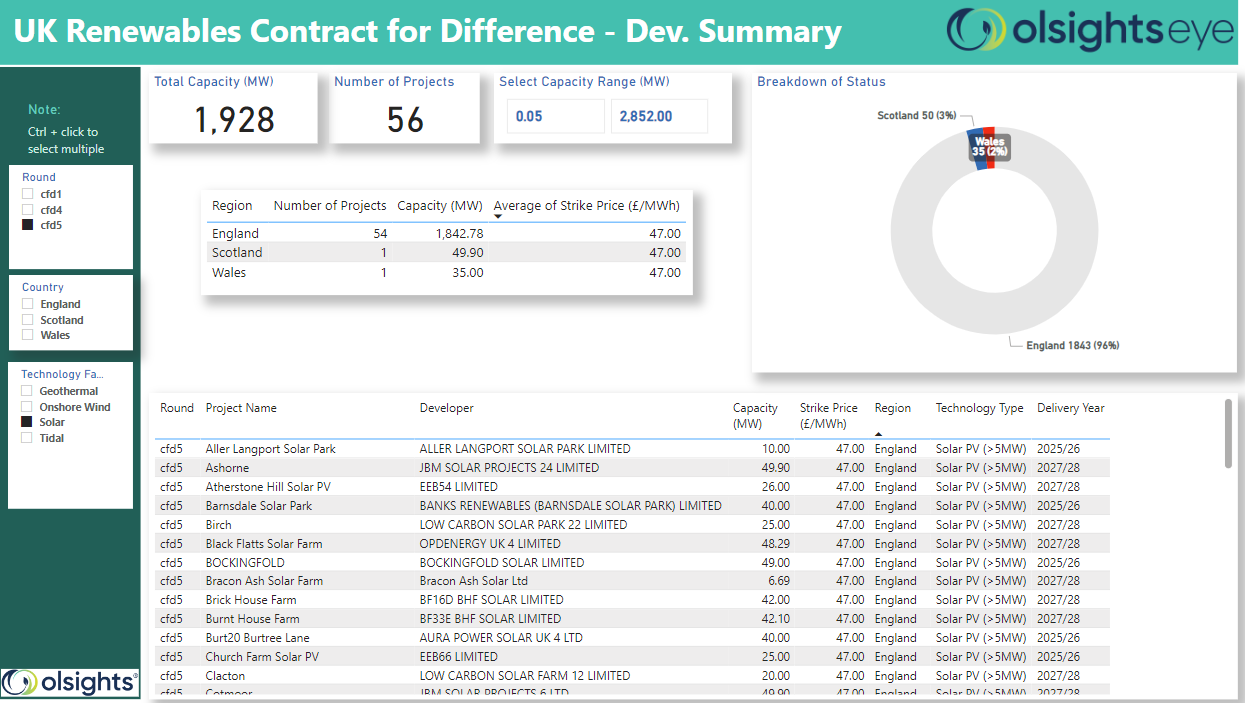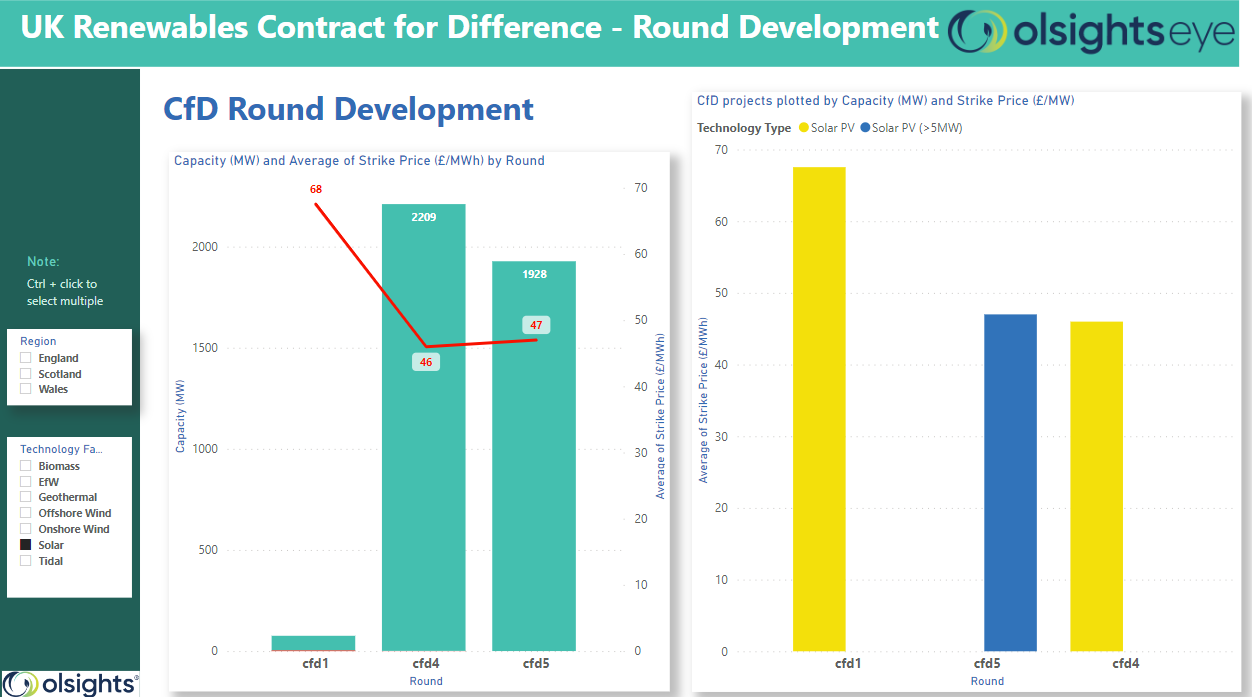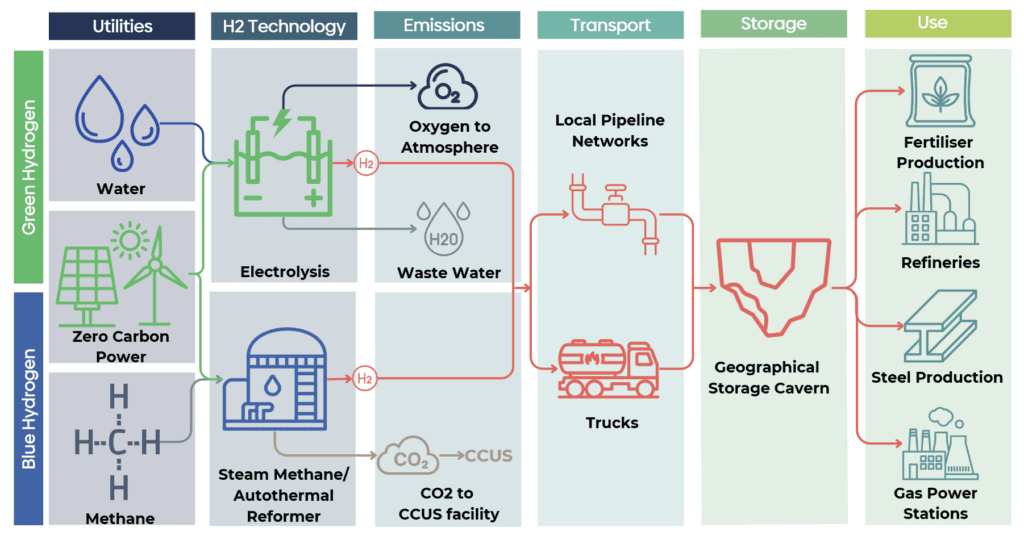Why Solar Contracts for Difference are Still Relevant
by Emmanuel Kirunda Olsights COO & Commercial Director
Solar Contracts for Difference (CfDs) have been a beneficial mechanism for promoting renewable energy in the UK. However, with the most recent awards of Sept 2023 having a strike price of £47 per megawatt-hour (MWh) – £65 in today’s money, which was significantly lower than the market price at the time of £116/MWh, questions arise regarding their continued viability.
Solar CfDs were initially designed to provide a stable revenue stream to renewable energy projects, ensuring that investors receive a guaranteed price for their generated electricity. This certainty encourages investment in solar energy infrastructure and helps drive down costs in the sector.
The disparity between the strike price and the market price, though, raises concerns. While lower strike prices may seem advantageous for consumers, they can deter potential investors due to reduced profitability. This could potentially hinder the growth of the solar energy sector, hindering the country’s progress towards the goal of 70 GW of solar capacity by 2035.
Nonetheless, it is important to consider that market prices fluctuate due to various factors, including electricity demand and generation capacity, let alone geo-political factors. So when you consider that current wholesale price has halved between October to February to be £62/MWh, it should point to the relevance of the steady impact of CfDs. Setting a strike price significantly higher than the market price poses challenges, potentially burdening consumers with higher energy costs. Striking the right balance between affordability and profitability is crucial to sustaining solar CfDs. Given that the levelized cost of solar energy is about £55 /MWh, many investors should stay confident that with CfDs, their long-term interests are protected.
Furthermore it is essential to acknowledge future advancement, such as advancement in solar technology and decreasing manufacturing costs. IRENA reports that most solar cost categories fell by 28% to 43% over the last 4 years (IRENA, 2023). These factors may eventually lead to a future more stable market price alignment with the strike price, making solar CfDs an even more attractive proposition for investors.
In conclusion, while the occasional disparity between the strike price and market price poses challenges for the viability of solar CfDs at a time, a comprehensive analysis of market dynamics, technological advancements and long-term goals in renewable energy is necessary to really appreciate their continued effectiveness and viability.
At Olsights we provide the insights needed to explore and analyse the techno-economic and and project finance of solar developments. We have created interactive dashboards that allow you to easily find the information you require for your specific project requirements.
Contact us for a demo to find out how Olsights can help you explore the world of clean energy.
